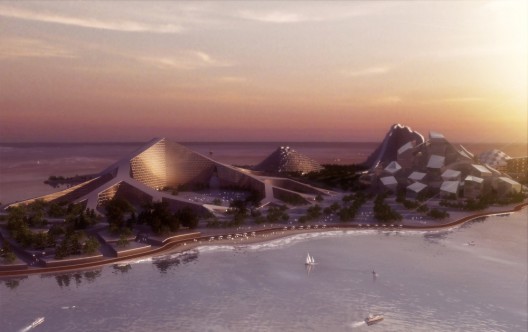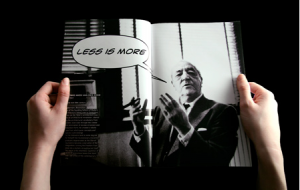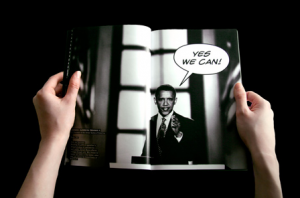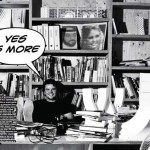Although the Bjarke Ingels Group (2006) is a relatively young architectural practice – younger, in fact, than Facebook – it has rapidly acquired quite a name for itself and has already won numerous competitions, awards and prices. Its founder Bjarke Ingels (1974) has of late dominated magazine covers, editorials and headlines and is the 2010 laureate of the European Prize for Architecture. This has as much to do with the panache of his designs as with his refreshing approach to architecture.
His attitude towards design and urbanism might be best encapsulated by BIG’s manifesto Yes is More: An Archicomic on Architectural Evolution (2009). It is at once as playful as a comic-book and as serious as a manifesto, simultaneously teeming with big ideas and littered with pragmatic propositions, both claiming a position to speak or to act and mocking itself for doing so, taking things forward yet always taking things light-heartedly, good-humored even. Ingels once described his approach to architecture as a ‘pragmatic utopianism’:
“Historically the field of architecture has been dominated by two opposing extremes. On one side an avant-garde full of crazy ideas. Originating from philosophy, mysticism or a fascination of the formal potential of computer visualizations they are often so detached from reality that they fail to become something other than eccentric curiosities. On the other side there are well-organized corporate consultants that build predictable and boring boxes of high standard. Architecture seems to be entrenched in two equally unfertile fronts: either naively utopian or petrifyingly pragmatic. We believe that there is a third way wedged in the no-mans-land between the diametrical opposites. Or in the small but very fertile overlap between the two. A pragmatic utopian architecture that takes on the creation of socially, economically and environmentally perfect places as a practical objective.”
Indeed, as the critic Luke Butcher previously noted, Bjarke Ingels, here, seems to tap into the metamodern sensibility, appears to embody the metamodern attitude. For Ingels seems to oscillate between modern positions and postmodern ones, a certain out-of-this-worldness and a definite down-to-earthness, naivety and knowingness, idealism and the practical.
In a later post we will discuss in more detail some of BIG’s pragmatic utopian designs. Meanwhile, please do enjoy, at least, the daring masterplan for Zira Island, an all-encompassing carbon neutral design for a 1.000.000 m2 island off the coast of Azerbaijan (top image).





here’s a great talk by bjarke ingels, full of his ‘yes is more’-attitude
http://www.ted.com/talks/bjarke_ingels_3_warp_speed_architecture_tales.html
Hi Roel, cheers… It most certainly is a great talk.